A tranquil promenade-style garden with a pond
Gyokusen-en Garden was designed with a focus on the view from the house; the ponds, stones and waterfalls are arranged in such a way that the best scenery can be viewed from the veranda.
In keeping with the style of the garden, there are well-placed stones and green moss. Moreover, giant old trees create a special beauty that results from their profound yet subtle atmosphere, which can only be felt by entering the garden. Please enjoy strolling around the pond while changing viewpoints.

The garden’s old trees and plants
The garden’s old trees include a 400-year-old Korean pine tree, a Chinese trumpet creeper, maples and cypress trees.

In spring, skunk cabbage, horse chestnut, Japanese holly, Fastigiate yew pine and Japanese globe flowers bloom, and in early summer, irises, yuzuriha (false daphne), Japanese winterberry and Japanese ternstroemia bear leaves and bloom in succession.
In autumn, quercus myrsinaefolia, aloes-wood and Japanese ardisia bear delightful fruit. As well, the leaves of winged spindle trees and Enkianthus turn red, and sweet osmanthus trees become fragrant.
When the weather becomes colder, osmanthus ilicifolius and camellia sasanqua bloom, adding color to the snowy garden.
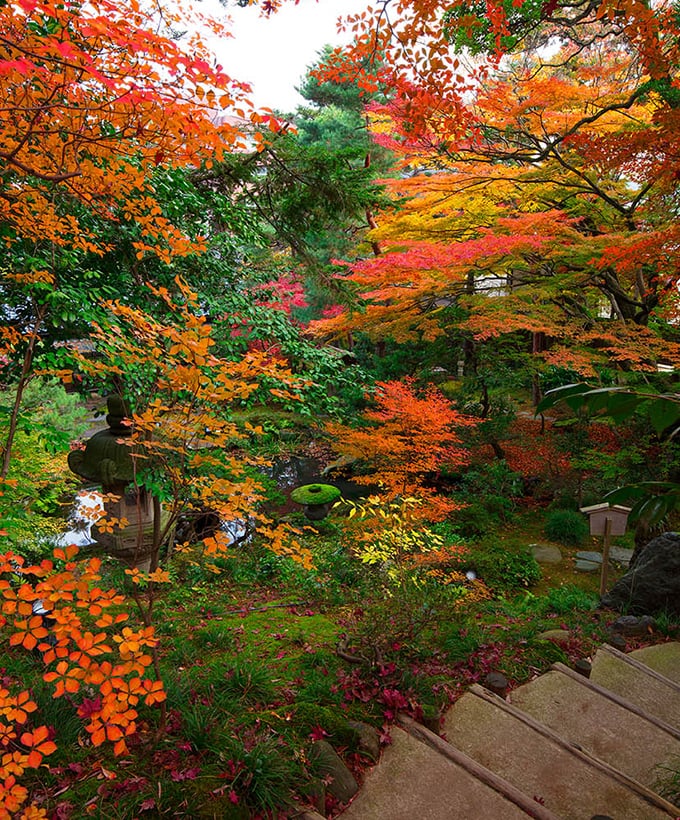
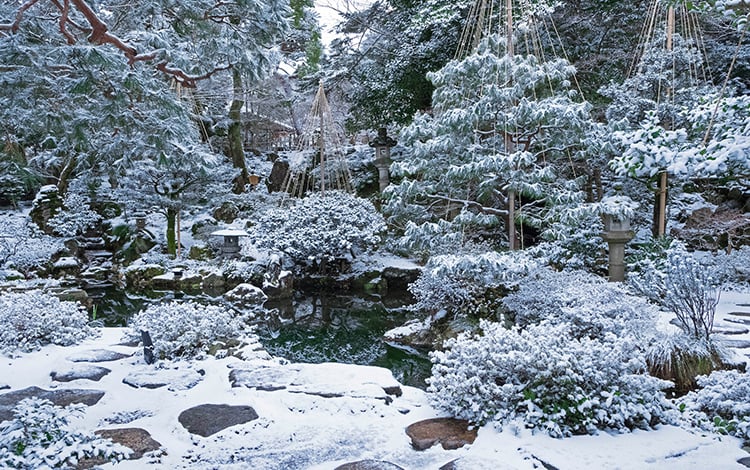
The garden’s style
Gyokusen-en consists of three gardens: the main garden, the west garden and the east garden. It borrows the scenery of Kenroku-en Garden and uses the topographical feature of a cliff. The layout of the ponds as well as the structure of the waterfalls and stonework conform to the garden style of the early to mid Edo period.
For example, the pond in the shape of the character for “water" is characteristic of the mid Edo period.
The right side of the garden, as seen facing the pond, is an islet, which has another islet in front of it.
This feature shows that the garden was designed for viewing purposes.
There are two waterfalls in the cliff area, which can be seen from the front of the main garden. As for the east waterfall, the gardening style of the early Edo period can be found in its structure and the arrangement of stones.
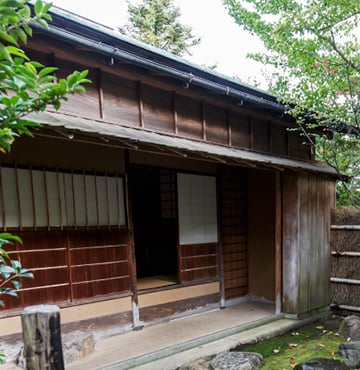
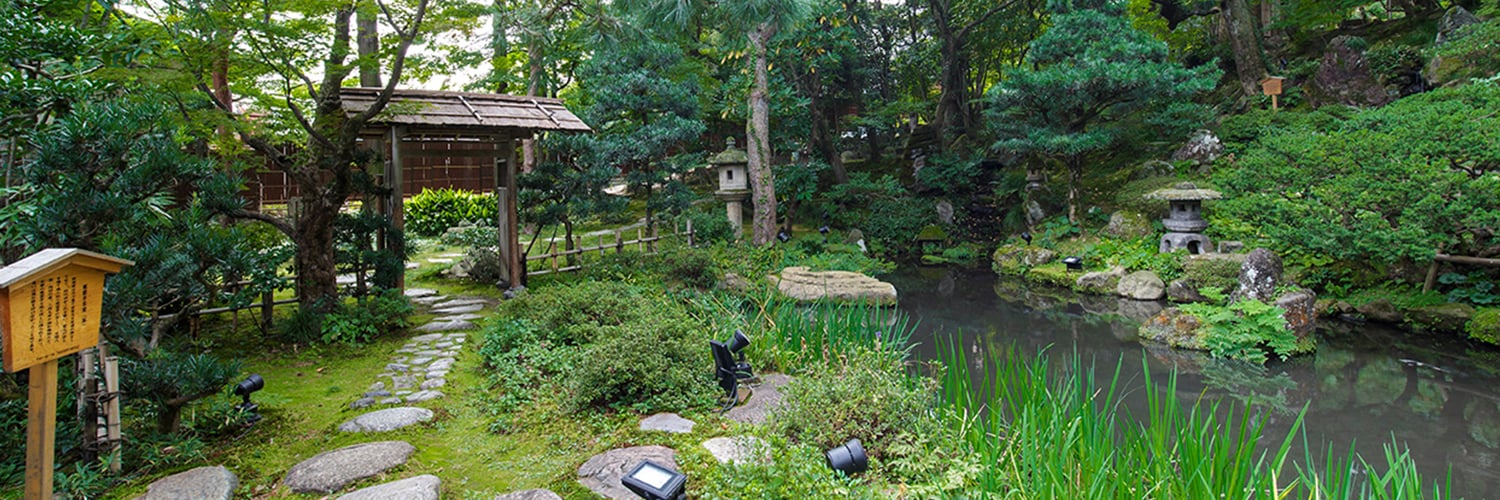
The main garden
This is the focal point of the entire garden.
When viewed from the front of the garden, we can see a pond in the shape of the character for “water” and two pairs of waterfalls to the east and west in the cliff area. The undulating landscape is like a picture drawn on a scroll.
The Saisetsu-tei tea house is at the top of the cliff area.
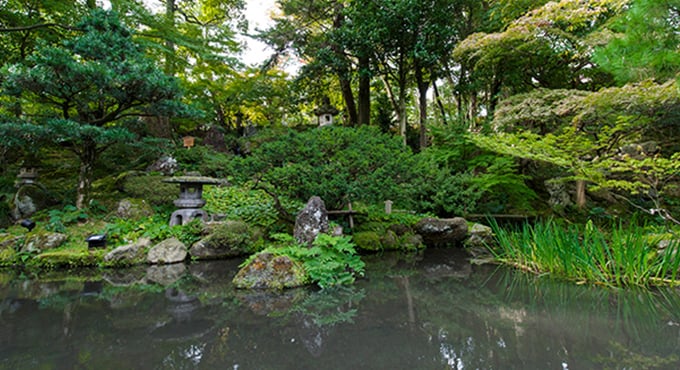
Oribe-style stone lantern for crypto-Christians
The crypto-Christian lantern was built by Wakita Naokata, a Kaga Clan retainer who was a crypto-Christian. It was built by the clan's stonemasons using blue Tomuro stone.
The overall shape is like a cross, and an image of the Virgin Mary with joined hands is engraved at the bottom of the lantern.
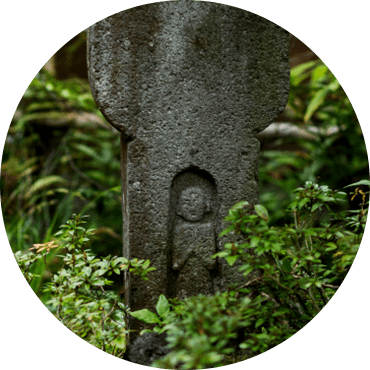

Korean pine tree
There is a vigorous Korean pine tree in the top section of the garden. A Chinese trumpet creeper, the seeds of which were a gift from Omatsu, the lawful wife of the first lord Maeda Toshiie, grows at the bottom of the pine tree. It can be seen from the commanding height of Kenroku-en Garden.
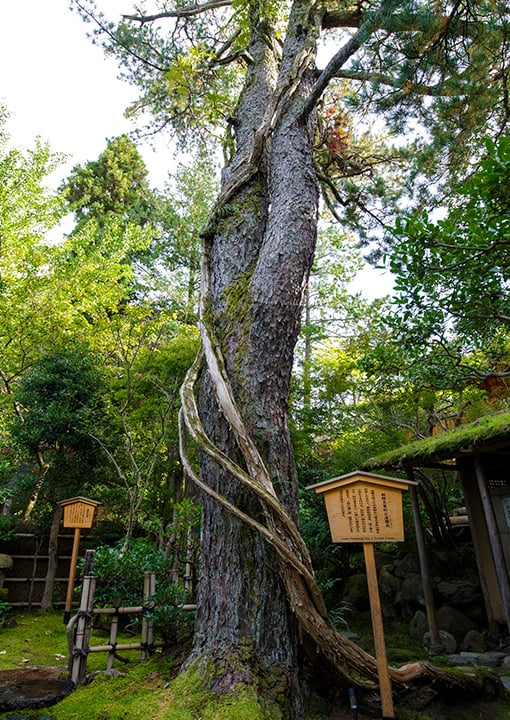
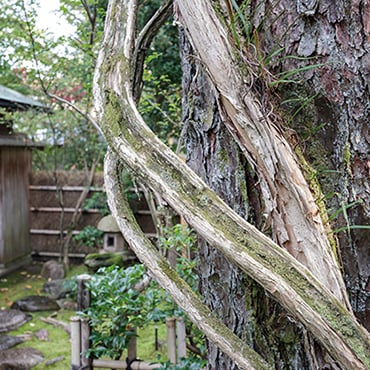
Saisetsu-tei
This tea house was constructed under the direction of Senso Soshitsu, the founder of the Urasenke tea ceremony school.
There are two entrances: the right side is for higher-ranked persons, and the left side is a small entrance (nigiriguchi) through which guests enter on their knees.
The tea room has one tatami mat and two daime-tatami mats, and the alcove post is made of red pine.
The tea house features an atmosphere of simplicity and quietude.
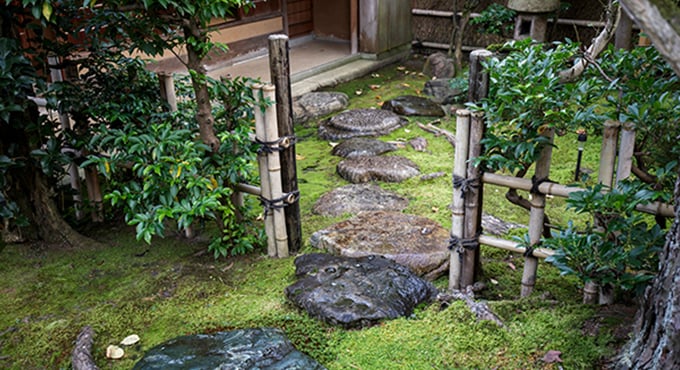
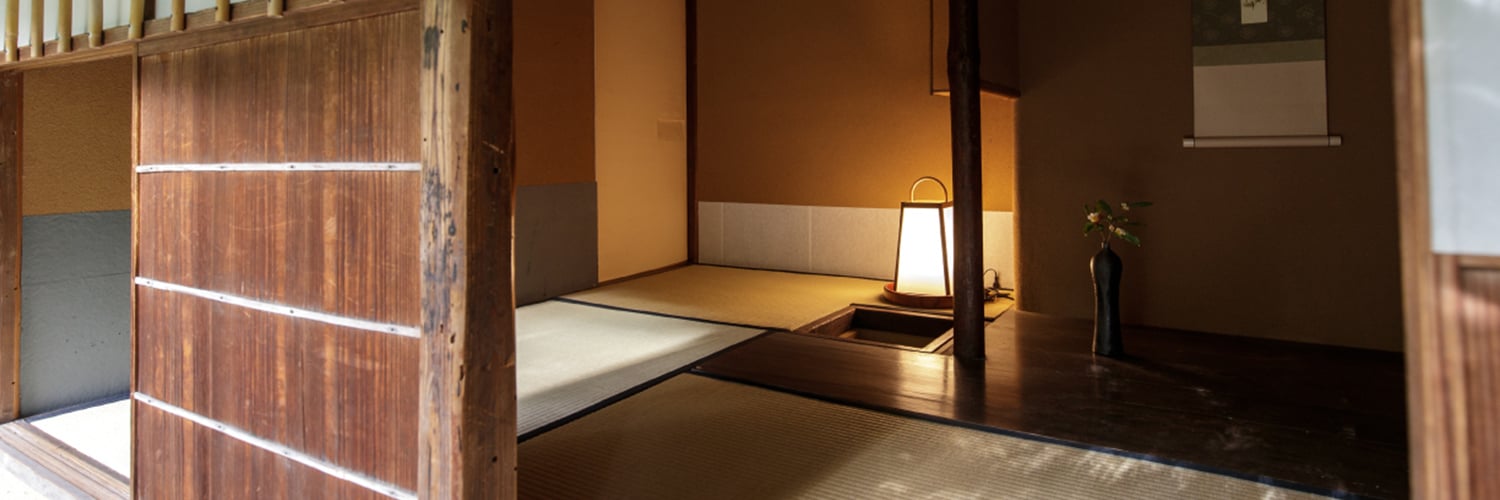
East waterfall
The waterfall flows down from the pond on the upper level to the lower level in three stages.
The fact that the pond’s water is drawn from the stream of Kenroku-en Garden shows that the lord of the Kaga clan had a great deal of trust in the Wakita family.
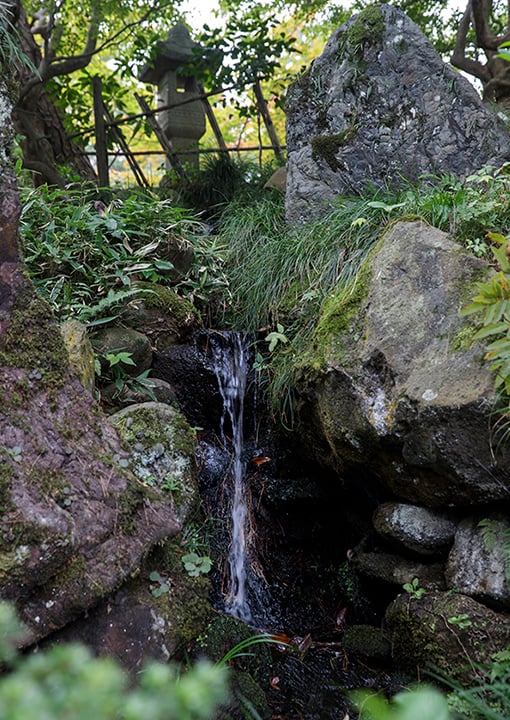
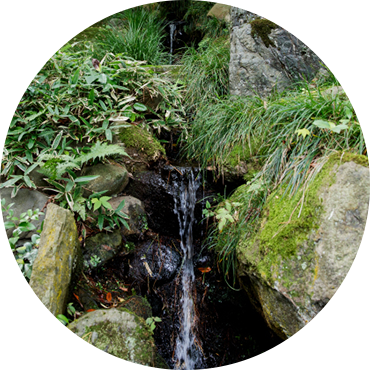
Ponds with colonies of skunk cabbage
Skunk cabbage grows naturally in the two ponds on the upper and lower levels of the garden. Generally, skunk cabbage grows on high-elevation marshland; it is rare for it to grow in low-elevation urban areas.

Layout of the garden
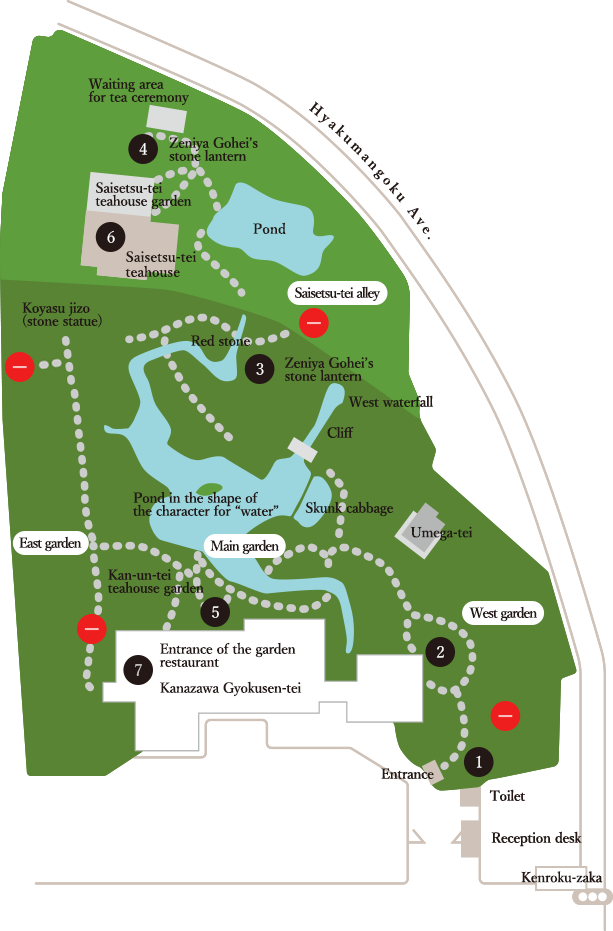
-
Oribe-style stone lantern for crypto-Christians
-
Tubular washbasin with decoration
-
East waterfall
-
Korean pine and Chinese trumpet creeper
-
Washbasin handed down by the Matsudaira family of Echizen (present-day Fukui Prefecture)
-
Saisetsu-tei teahouse
-
Kan-un-tei (photo)
-
Do not enter the area beyond this point.